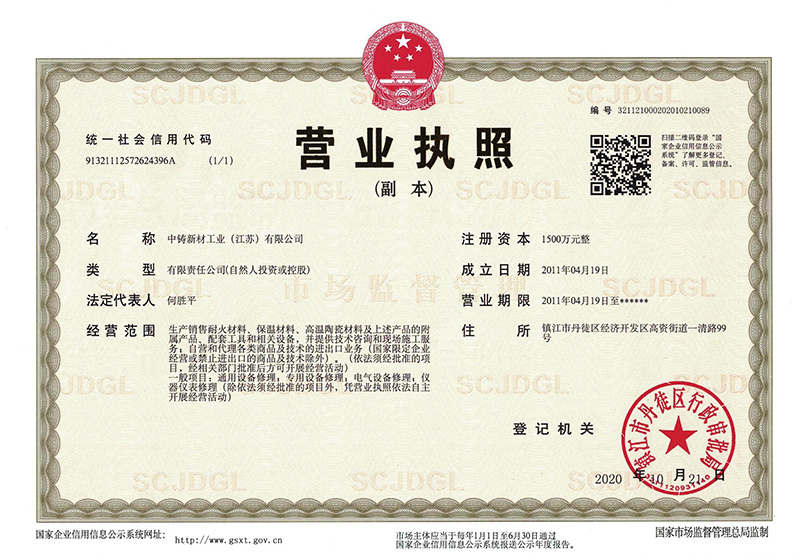News
SINO-FOUNDRY—professional refractory manufacturer
Exploring the Role of Alumina Refractory Materials in Sustainable Construction Practices
2025-07-12
Exploring the Role of Alumina Refractory Materials in Sustainable Construction Practices Table of Contents 1. Introduction to Alumina Refractory Materials 2. Properties of Alumina Refractory Materials 3. The Importance of Sustainable Construction 4. Applications of Alumina Refractory Materials in Construction 5. Enhancing Energy Efficiency with Alumina Refractories 6. Dura
Exploring the Role of Alumina Refractory Materials in Sustainable Construction Practices
Table of Contents
- 1. Introduction to Alumina Refractory Materials
- 2. Properties of Alumina Refractory Materials
- 3. The Importance of Sustainable Construction
- 4. Applications of Alumina Refractory Materials in Construction
- 5. Enhancing Energy Efficiency with Alumina Refractories
- 6. Durability and Longevity of Structures
- 7. Environmental Impact of Using Alumina Refractories
- 8. Future Trends in Sustainable Construction
- 9. Conclusion
- 10. FAQs about Alumina Refractory Materials
1. Introduction to Alumina Refractory Materials
Alumina refractory materials are critical components in modern construction, particularly in applications that demand exceptional heat resistance and structural integrity. As the construction industry increasingly turns toward sustainable practices, understanding the role of these materials becomes paramount. This article delves into how alumina refractories can contribute to eco-friendly construction, paving the way for innovative and responsible building solutions.
2. Properties of Alumina Refractory Materials
Alumina refractories are primarily composed of aluminum oxide (Al2O3), often with varying percentages of other compounds, making them unique for their exceptional properties:
2.1 High Thermal Stability
One of the standout characteristics of alumina refractories is their ability to withstand high temperatures without deforming or melting. This property is crucial for applications in kilns, furnaces, and other high-heat environments.
2.2 Chemical Resistance
Alumina materials also exhibit excellent resistance to acidic and basic environments, allowing them to maintain structural integrity even in harsh conditions. This chemical durability is vital in reducing maintenance costs and extending the lifespan of constructions.
2.3 Low Thermal Conductivity
With low thermal conductivity, alumina refractories provide effective insulation. This property is essential for energy efficiency, as it helps to retain heat within structures, reducing energy consumption and costs.
3. The Importance of Sustainable Construction
Sustainable construction practices aim to minimize the environmental impact of building activities. These practices encompass the entire lifecycle of a structure, from materials selection to energy efficiency and waste reduction. By focusing on sustainability, the construction industry can contribute to the larger goal of environmental stewardship and resource conservation.
4. Applications of Alumina Refractory Materials in Construction
Alumina refractory materials are versatile and find their application in various aspects of construction, especially where durability and heat resistance are essential.
4.1 Industrial Facilities
Industries such as metallurgy and cement production rely heavily on alumina refractories for lining furnaces and kilns. The high thermal stability and chemical resistance of these materials enhance operational efficiency and safety.
4.2 Fire Protection Systems
In building design, fire safety is paramount. Using alumina refractories in fire protection systems, such as fire-resistant walls and barriers, ensures that structures can withstand extreme temperatures, protecting both occupants and property.
4.3 Energy Systems
Many energy systems, including gas turbines and biomass boilers, utilize alumina refractories to endure extreme conditions while maintaining efficiency. Their use is essential in developing energy-efficient systems that align with sustainable goals.
5. Enhancing Energy Efficiency with Alumina Refractories
Energy efficiency is a crucial aspect of sustainable construction. Alumina refractories play a significant role in this area:
5.1 Insulation Properties
Due to their low thermal conductivity, alumina refractories act as excellent insulators. This characteristic reduces energy loss in heating systems, leading to decreased energy consumption and lower utility bills.
5.2 Reducing Carbon Footprint
By enhancing the energy efficiency of buildings, alumina refractories contribute to a reduction in greenhouse gas emissions. Structures that consume less energy help mitigate the overall carbon footprint of the construction sector.
6. Durability and Longevity of Structures
Durability is a vital factor in sustainable construction. Buildings designed with long-lasting materials minimize the need for frequent repairs and replacements, conserving resources and reducing waste.
6.1 Improved Lifespan
Alumina refractories are known for their exceptional lifespan. When utilized in construction, they can significantly extend the longevity of structures, leading to lower lifecycle costs.
6.2 Maintenance Considerations
The chemical and thermal resilience of alumina refractories means that they require less maintenance compared to other materials. This quality not only saves money but also reduces the environmental impact associated with maintenance activities.
7. Environmental Impact of Using Alumina Refractories
The use of alumina refractories aligns with environmentally responsible practices in several ways:
7.1 Resource Conservation
These materials often incorporate recycled components, contributing to resource conservation and decreasing the environmental burden associated with raw material extraction.
7.2 Waste Reduction
By extending the lifespan of structures and minimizing maintenance needs, alumina refractories help lessen the amount of construction and demolition waste generated.
8. Future Trends in Sustainable Construction
As the construction industry evolves, so too does the need for innovative materials that promote sustainability. The future of alumina refractories in construction is promising:
8.1 Advancements in Material Technology
Ongoing research into enhancing the properties of alumina refractories will likely yield even more efficient and sustainable options for construction, supporting the industry’s shift toward eco-friendly practices.
8.2 Integration with Smart Technologies
The integration of smart technologies in building materials, including alumina refractories, can lead to advancements in building management systems, further improving energy efficiency and environmental performance.
9. Conclusion
The role of alumina refractory materials in sustainable construction practices is significant and multifaceted. Their superior properties not only enhance the durability and energy efficiency of buildings but also contribute to minimizing the environmental impact of construction activities. As we move toward a future that prioritizes sustainability, embracing materials like alumina refractories will be essential for the construction industry to thrive while safeguarding our planet.
10. FAQs about Alumina Refractory Materials
10.1 What are alumina refractory materials?
Alumina refractory materials are high-performance materials primarily composed of aluminum oxide, designed to withstand extreme heat and adverse chemical environments.
10.2 How do alumina refractories contribute to energy efficiency?
Their low thermal conductivity provides excellent insulation, reducing energy loss and lowering energy consumption in buildings.
10.3 Are alumina refractories environmentally friendly?
Yes, they promote sustainability by utilizing recycled materials, reducing waste, and extending the lifespan of structures.
10.4 In what industries are alumina refractories most commonly used?
They are widely used in industries such as metallurgy, cement production, and energy systems that require high-temperature materials.
10.5 What are the future trends for alumina refractories in construction?
Future trends include advancements in material technology and the integration of smart technologies to further enhance their sustainability and performance.
Related News
2024-11-05
Zhongzhu New Materials Industry sincerely invites you to participate in the 24th International Forum and Exhibition on Recycled Metals.

WeChat public account

View mobile website
Address : No. 99, Yiqing Road, Gaozi Street, EconomicDevelopment Zone, Dantu District, Zhenjiang City
Fax : +86-511-85683066
E-mail : sales@sfr168.com
Website : https://www.sfr168.com
Copyright©2023 Sino-Foundry Refractory(Jiangsu) Co.,Ltd. Powered by:www.300.cn
Copyright©2023 Sino-Foundry Refractory(Jiangsu) Co.,Ltd.
IPV6 | SEO | Cloud Information



